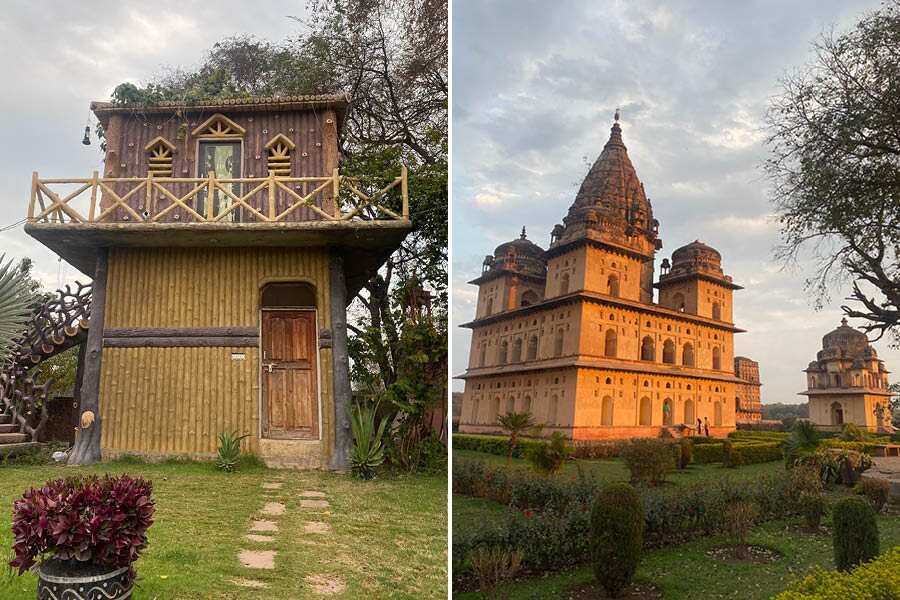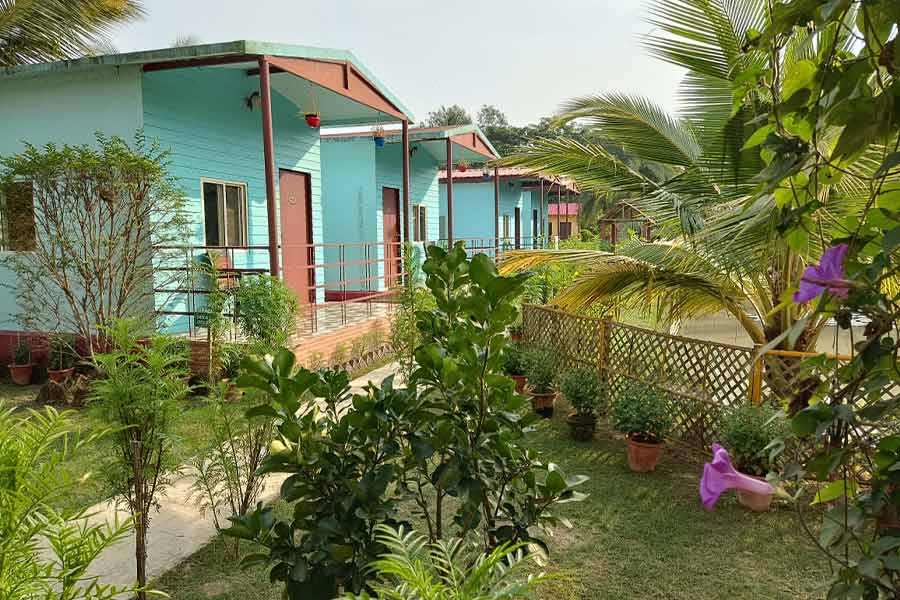Orchha stands tall and majestic on the banks of the Betwa River with its magnificent monuments. Known for its intricate temples, grand palaces, and stunning structures, Orchha is in the process of being rediscovered and becoming popular, all thanks to the homestays run by women of nearby villages. Their endearing cottages amidst mustard fields and splendid memorials have become great tourist attractions in this hidden gem in northern Madhya Pradesh. Equipped with all creature comforts, these stays are offering people a chance to experience the charms of languid holidays soaking in the clean air, with organic meals and mindful moments.
Uma’s pioneering Mahua Hill View
In Ladpura Khas village, 7km from Orchha town, Uma Pathak’s homestay Mahua Hill View sports two pretty cottages under a huge mahua tree. Interesting artworks adorn the wooded compound; a set of swings placed amidst lush green fields overlook a hill range in the distance. The gentle breeze carries the soft humming of a young woman on a swing and the whole setting looks idyllic. Uma welcomes us with a warm smile and a plateful of mahua flowers fried in pure ghee. Sitting on the charpoys, munching the unique crispies, we listen to her story.
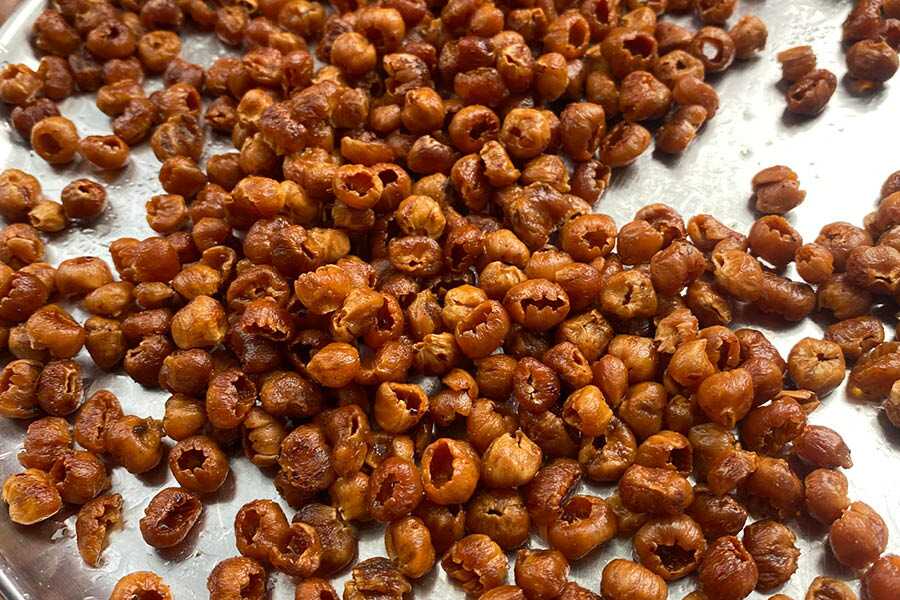
Mahua flowers fried in ghee
“About 970 tourists have come to my homestay in the last two years, including 42 foreign guests. Though they come here to visit Orchha, what attract them more are the village lifestyle, clean air, and the Bundelkhandi cuisine. Some guests are so enamoured by the environs, that sometimes they skip sightseeing, and prefer to spend the whole day relaxing under the trees or in the cool comfort of tiled houses,” says Uma.
Five more homestays have come up in the village, inspired by her own, she adds. In addition to generating income, the homestay establishes her identity. Uma has also received an award for her hospitality, she concludes with a faint trace of pride.
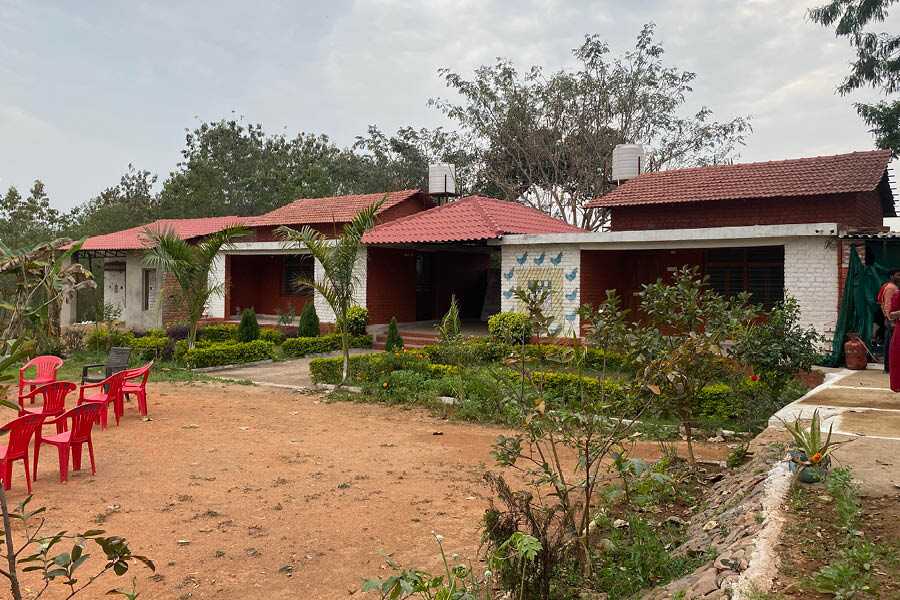
Women-run homestays close to Orchha offer easy accesibility to the sights of the town
The gems of Orchha
We leave Uma’s homestay for a sightseeing tour with our guide Hemant Goswami. As we enter the town, the stunning chhatris (royal tombs) come into view. With intricate carvings, ornamented pillars, and decorated domes, they seem a fitting place for the erstwhile rulers of Orchha, the Bundela kings, to rest in peace — Raja Veer Singh Bundela’s chhatri looks like a palace!

Royal cenotaphs of Orchha
The Orchha Fort is a sprawling complex surrounded by a moat on three sides. It features various ancient monuments with interesting architectural features like ornamented battlements, projecting balconies, open flat areas, decorated latticed windows, and more. According to Hemant, the uniquely styled “pepper pots and domes” inspired British architect Sir Edwin Lutyens when he was designing New Delhi.
The most striking part of the fort complex is the Jahangir Mahal, which was built in the early 17th century by Raja Veer Singh Bundela to commemorate his friend and Mughal emperor Jehangir’s visit to Orchha. Interestingly, the monarch stayed here just for one night and it was later converted into a royal guesthouse. The palace is a three-storied structure with elegantly hanging balconies, porches, apartments, Timurid domes and huge entrances, which were once used for war elephants to pass.
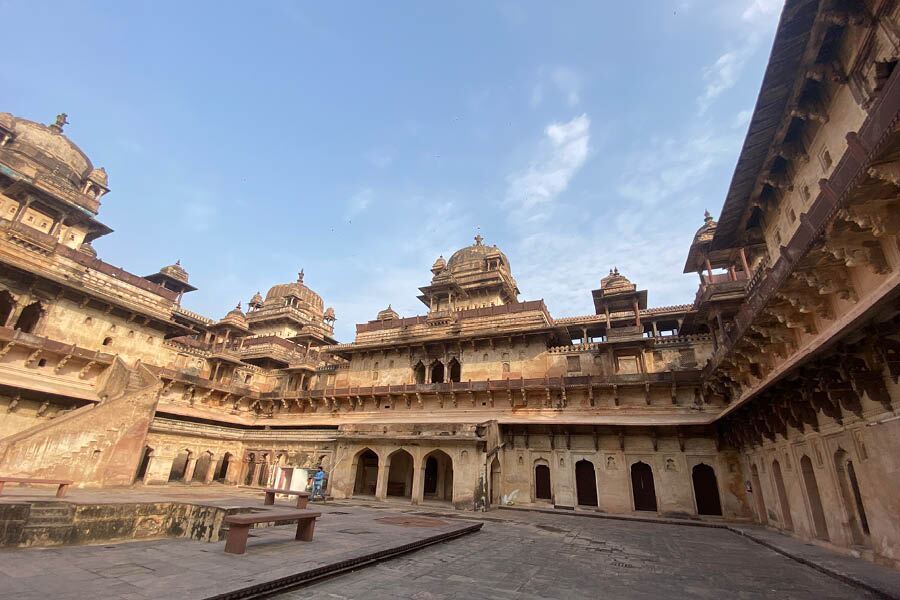
The Orchha Fort complex
The Sheesh Mahal (Palace of Mirrors) is now a heritage hotel, where we take a coffee break and meet a three-generation Italian family who seem to be captivated by Orchha’s grandeur and rave about their third visit to India.
The Raja Mahal has magnificent towers and spectacular murals, some of which are still fresh and appealing. In the upper floor of the palace, there are traces of mirrors in the ceilings and walls. Its windows, arcaded passages, and layout plan are designed to create different moods and temperatures based on sunlight and shadows throughout the day.

The magnificent entrance of Raja Mahal and (right) murals inside Rani Mahal
Cossetted charmingly in the splendid complex is the Rani Mahal, built for queen Ganesh Kumari. The queen was an ardent devotee of Ram, and the palace is known for its lovely frescoes depicting stories from the Ramayana. Adjacent to the palace in the Ram Raja Mandir, Ram is worshipped as a king and is given a befitting guard of honour every day.
Rekha and Kamla’s restful retreat
Back in Ladpura, at Rekha & Kamla Home Stay, we find Rekha frying hot pakoras on a chulha while Kamla grinds chillies, onions, tamarind and other condiments for chutney. Plump hens peck at grins, their chicks trailing behind while rooster chase in other in a fight. The scene, complete with pumpkin and ash gourd climbers on sloping roofs paint a picture of rural peace. Rekha and Kamla’s husbands are farmers who grow grain and vegetables in the adjacent fields, and also help in guest relations. As we go around, we spot heaps of buffalo dung that is used in their sustainable organic farming. Under the huge ber trees, we gather ripened berries that have fallen to the ground and also pluck some from the lower branches. Seeta, the family’s shy, young bride offers to wash the fruit and packs them neatly for our return journey.
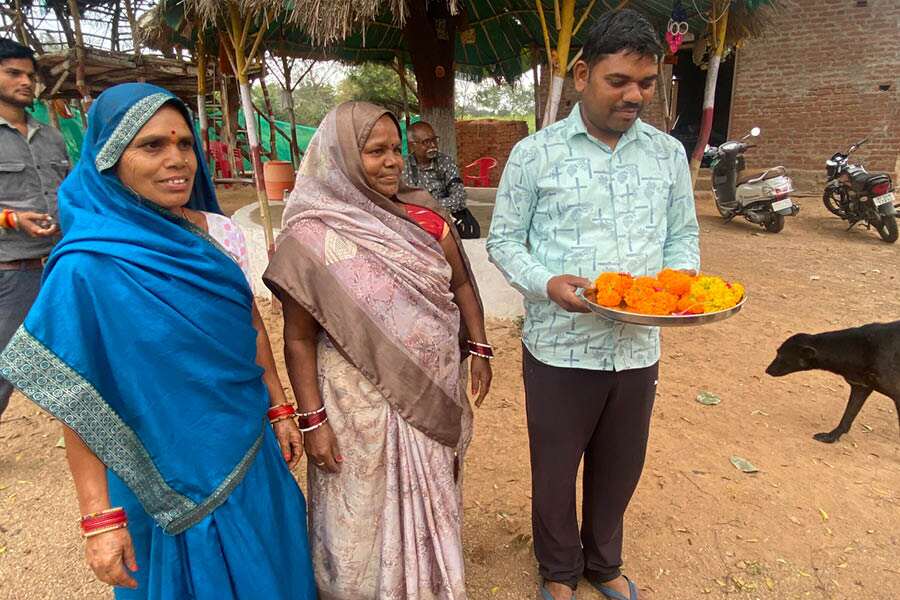
Rekha and Kamla welcome guests
Over hot chai and pakoras, Rekha and Kamla share their experiences with the guests. Those who come to stay for a couple of days often end up staying for a week, simply to breathe oxygen-rich air, eat freshly cooked organic food and mingle with the villagers in their song and dance, say the ladies.
Later, as we go river rafting on the scenic Betwa surrounded by lush greenery and silhouetted monuments in the distance, I reflect on these stories of women empowerment in the land of Jhansi’s Rani Laxmi Bai. That is when I hear the modern-day story of Bhuri Bai, a tribal woman who constructed a homestay cottage all by herself using mud and bricks. When the women from the Kekadiya tribe were given training in masonry, Bhuri Bai went on to build three more homestays and helped other women rewrite their destinies.
